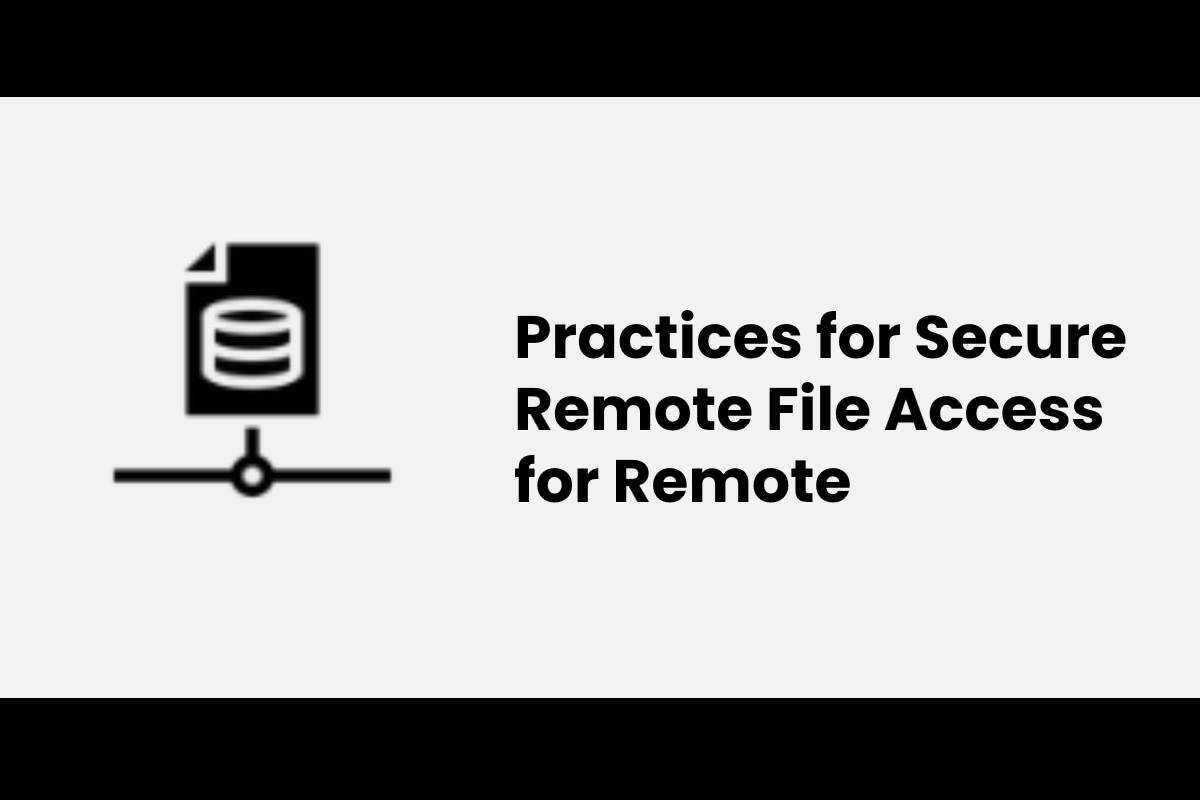

Secure File Access Mastery for Remote Teams
Staying Safe When You’re Working From Your Couch: Secure Remote File Access
The freedom to work from wherever you want is one of the biggest Perks of a remote job. But home‑based work has become the new normal after COVID‑19, and with that comes a hefty dose of worries about data security. Think about workers hopping onto unsecured Wi‑Fi, or that one employee who brings locked files into a coffee shop. Remote work brings new high‑security challenges that businesses just cannot ignore.
Table of Contents
- Risks Involved
- Leakage of Confidential Data
- Vulnerability to Attacks
- Installation of Malware
- Best Practices to Follow
- Never Share Files Over Email
- Be Prepared for Threats
- Engage User Authentication
- Encrypt Sensitive Data
- Setup VPN
- Designate Specific Devices for Remote Work
Risks Involved
Remote file sharing can open up a Pandora’s box of security risks. You’ve probably seen the headlines about data breaches, phishing scams, and ransomware attacks. Each risk hides behind a seemingly innocent click or a misconfigured setting.
Leakage of Confidential Data
When files are stored on personal cloud services or shared through unsecure channels, confidential information can slip into the wrong hands. Collectively, you and your teammates need to keep the data fortress strong.
Vulnerability to Attacks
Hackers are always looking for the weak link. Whether it’s a forgotten password or a broken auto‑save feature, the vulnerabilities can ease in malicious intrusions.
Installation of Malware
Messed‑up files, compromised attachments, or insecure networks can all turn the remote workspace into a playground for malware. A single bad download can bring a whole company’s data to a halt.
Best Practices to Follow
- Never Share Files Over Email – Email attachments are like a doorbell that rings for everyone. Use secure, dedicated file sharing platforms instead.
- Be Prepared for Threats – Keep all your software updated, use auto‑updates for browsers, OS, and antivirus tools.
- Engage User Authentication – Strong login methods, like two‑factor authentication (2FA), protect your accounts from unauthorized access.
- Encrypt Sensitive Data – Encryption is like a digital padlock. Without it, any intercepted data remains useless to attackers.
- Setup VPN – A Virtual Private Network keeps your internet traffic encrypted and hidden from prying eyes.
- Designate Specific Devices for Remote Work – Use company‑managed laptops or desktops, and avoid blending personal devices with corporate data.
Wrap‑Up
Remember: when you think about data security, it’s not just up to the IT team – it’s a shared responsibility. With the right precautions, you’ll keep your remote workplace safe, save those coffee shop stories (maybe with a keyboard covered in protective gear?), and give corporate data a safe haven. Stay smart, stay secure, and keep that flexibility alive without the nightmares.
Risks Involved
Leakage of Confidential Data
Beware of Remote File Sharing Disasters
What’s the danger?
Sharing files from a remote location can leave your sensitive info exposed—imagine tossing a diary on a crowded train platform.
What could a hacker do?
- Steal any file in your possession.
- Examine, tweak, or sell your personal data.
- Make a tidy profit from your secrets.
Guard Your Digital Space
Keep it locked: encrypt files, enforce strict access controls, and never leave your data unprotected. No one should break into your digital house without the proper keys.
Vulnerability to Attacks
Beware the File‑Sharing Pitfall: Why a Simple Download Can Turn into a Disaster
Picture this: you’re in a rush to finish a project, you click “Download,” the file lands in your folder, and you’re ready to go. Sounds harmless, right? Not so fast. Dropping a file in the dark corner of your machine is a recipe for trouble—especially if you don’t play by the golden rules of cyber‑security.
What’s the Real Danger?
- Malware Invasion – It could be a disguised virus or ransomware waiting to lock your data.
- Phishing Bomb – A file might carry a link that steals your credentials the moment you click.
- Data Leakage – Sensitive information could slip out of your control if the file is tampered.
Quick Fixes Anyone Can Do
- Run the file through a virus scanner before opening.
- Verify the source — only download from reputable sites.
- Keep your operating system and antivirus up‑to‑date.
- Use secure sharing tools that encrypt data during transport.
Emotionally Add‑It: The Human Touch
Think of it as treating a gift you’ve received with respect. Just as you’d inspect a package before opening, treat every file with a same level of caution. A few seconds’ patience can save you from hours of nightmare.
Humor Touch‑point
Downloading a file is like inviting someone into your house—just because you trust them, doesn’t mean you should invite a burglar. Keep those invitations safe, folks.
Installation of Malware
Beware the Sneaky File
Picture this: an unsuspecting employee clicks on a shiny new document that looks just like the quarterly budget report, but in reality it’s a stealthy trojan horse. One innocent click and—poof—your entire network feels the sting of a silent cyber assault.
What’s on the Menu?
- Viruses – those pesky bugs that replicate like cats on a keyboard.
- Trojan Horses – disguised as harmless files, but carrying a nasty payload.
- Spyware – the nosy little thing that snoops on everything from passwords to your coffee preferences.
- …and a handful of other malicious actors ready to take a whack.
Why It Happens
A technical glitch can turn an innocuous shared file into a Trojan. A simple mistake—like mislabeling a spreadsheet—can create a perfect breeding ground for malware. Then, when a user opens it, the bad stuff gets installed, and the whole network sacrifices its alibis and security.
Real-World Consequences
- Data breaches that set off costly downtime.
- Financial losses that hit budgets harder than a bad cup of coffee.
- Reputation damage that blames the business’s trustworthiness.
Stop the Catastrophe Before It Starts
Think of file sharing like throwing a pizza party—everyone’s invited, but some crumbs are dangerous. Keep those crumbs out of the way. Stay frosty, stay safe!
Best Practices to Follow
Never Share Files Over Email
Why Email File Sharing Is a Bad Idea
Think of sending files via email like tossing a secret through a window and hoping it lands in the right hand. In reality, it frequently lands in the wrong one, and it’s not even all that secure.
Common Problems
- Security Slip‑Ups: Cyber thieves can snatch unencrypted files while they’re in transit, turning your confidential documents into open‑camp ground.
- No Central Hub: Without a single place to stash your data, files get lost like a needle in a haystack—especially when you’re juggling updates and drafts.
- Version Chaos: Tracking which file is the latest version becomes a detective game. Spoiler: the older file usually wins the mystery.
The Better Way
Swap the email chaos for a business‑grade, cloud‑based file sharing system. It’s the IT equivalent of a secure locker—only the right people can open it, and the entire storage is kept in one tidy place so you won’t lose track of your masterpiece.
Be Prepared for Threats
Remote Work: The Invisible Danger Zone
Think of cyber threats as sneaky burglars who can crash the party at any moment. Even the most well‑guarded offices can let them slip in through the back door of remote access.
Why the Threats Hide in Plain Sight
- Blind Spots – From a distance, you can’t see what your team is up to on their laptops.
- Moments of Lapse – A wrong click or an outdated VPN can open a golden egg for attackers.
- Hidden Risks – Even unseen, the danger remains, patiently waiting for a misstep.
Stay one Step Ahead
Being prepared means acknowledging that threats are real and can strike at any time. It’s not enough to ignore what looks harmless; you need a proactive playbook.
Quick Dozens of Defensive Moves
- Keep every device updated – your software is the first line of defense.
- Enforce strong, unique passwords and enable MFA.
- Use secure, cloud‑managed VPNs instead of DIY solutions.
- Run regular security drills so your team knows what to do when the alarm goes off.
Even if you can’t spot them, those threats are lurking. Stay vigilant, stay patched, and keep your workspace safe!
Engage User Authentication
Remote Access: The Right Moves
Why the Rulebook Exists
When you’re pulling data from the office while sitting on a beach in Miami, you want to make sure nobody else can jump in and steal your socks. It’s like a sandbox where you keep the wild animals at bay.
Why “All‑Access” Is a Bad Idea
Open‑door file servers sound convenient, but they’re basically handing out every key in the vault. Those “easy” gates risk turning your data into a public showcase faster than you can say “Oops.”
Menu of Risks
- Uncontrolled Access – Anyone can crack the door.
- Data Exposure – Sensitive files showdown on the internet stage.
- Compliance Quicksand – Regulators move in when you’re responsible.
Least‑Privilege: The Heroic Strategy
Think of the “least privilege” policy as the shield guard in your system’s medieval army.
- Default Deny: By default, everyone sits on the sidelines.
- Need‑Based Access: When you need the file, the gates open, then close again.
- Audit Trail: Every gate opening is logged. No mystery about who poked the cat.
Wrap‑Up
Because running a remote office is like high‑stakes poker, you want to keep the deck honest. Applying a minimal‑access philosophy means you guard your “royal flush” from reckless shuffling.
Encrypt Sensitive Data
Why Encryption Is Your Remote‑Work Superpower
Picture this: your team is scattered across coffee shops, home offices, and maybe a beachside cabana. When a phone slips into a hoodie or a laptop ends up on a stranger’s coffee table, data is at risk. Encryption keeps those secrets from turning into a hilarious plot twist.
The Pillars of Secure Remote Work
- Go Full VPN – Think of a VPN as a private tunnel that hides all your traffic from anyone with curious eyes.
- Keep Software Fresh – Outdated remote‑access tools are like old locks—update them or face a potential data breach.
- Regularly Check Strength – A weak cipher is like a flimsy hide‑and‑seek spot; make sure your encryption stays tough.
Protect Data, Preserve Humor
Always ensure any data traveling between remote workers and the company’s core systems is wrapped in solid encryption. A dash of security and a splash of humor can save you from the dreaded “confidential data: now in the wild” headline. Stay safe, stay smart, and keep those secrets where they belong—inside the vault!
Setup VPN
Why VPNs Matter: The Top 3 Perks
Having a reliable VPN is like putting a sturdy lock on your digital door—except it also lets you work from anywhere. Let’s break down the key benefits.
1. Remote Access Made Easy
- Connect from a sunny beach café, a bustling office, or even your grandma’s living room—your work stays in your pocket.
- It’s the secret sauce that lets your team stay productive, no matter where they are.
2. Secure Connections, Peace of Mind
- All data travels through an encrypted tunnel, keeping prying eyes at bay.
- Think of it as a digital passport that only you and the server can read.
3. Control Over Who Can Access What
- Set up rules so only the right people can see the right resources.
- It’s like having a smart guard that knows exactly who’s allowed in.
When you wire a VPN, every remote connection orbits that virtual gate. That ensures your resources stay protected while team members breeze through tasks from their corners of the globe.
Designate Specific Devices for Remote Work
Give Your Remote Workers a Dedicated Device
Let’s cut to the chase: personal gadgets on the job can lead to data nightmares. Instead, hand your team official laptops that are locked down for work‑only usage.
Why the swap matters
- Security first. Corporate gear gets the latest patches, antivirus and strict access controls.
- No junk. Keep the device lean – no random apps or files that could become a snoopback door.
- Audit ready. IT can audit usage and spot any rogue behaviour before it turns into a breach.
Hand‑off to IT
Once your crew has their dedicated hardware, the IT squad takes the reins:
- Regular firmware and OS updates—like giving the machine a fresh coffee every morning.
- Automated security scans to catch threats before the remote workers do.
- Monitoring to ensure no unnecessary data or buggy software is parked on the device.
Partnering Up for Smooth Sailing
When you need to share files with third‑party vendors or remote teammates, pick services that are security‑savvy and keep an eye on the bill of goods.
- Remote file booths: safe gateways for documents that require just the right level of access.
- Managed data: give trust, but not the keys—keep the data in a tightly bound vault.
Just a little safety net
Make sure your partner is ready to react immediately to any threat. They should have automated defense mechanisms that reduce human error and overload.
Keep your remote workforce powerful, secure and—most importantly—FREE from the temptation to hack their way into the office system with a smuggled phone or DSLR camera.




![Ways IT Industry is Changing the World [2025] Ways IT Industry is Changing the World [2025]](https://www.computertechreviews.com/wp-content/uploads/2025/04/IT-Industry.jpg)


